
Carl Sagan wrote in the June 1974 issue of Astronomy: “Clearly the best time to be alive is when you start out wondering and end up knowing. There is only one generation in the whole history of mankind in that position. Us.”
In its 50-year tenure, this magazine has seen breathtaking change — far too much progress to mention it all. But, for this special anniversary issue, let’s highlight a few key journeys we’ve made, as seen through the lens of science stories that have appeared in Astronomy magazine.
The road to the outer solar system
When Astronomy began publishing in 1973, the solar system as we knew it was a very different place. It had nine planets and we had not yet seen the worlds beyond the main belt up close. Pluto was the most distant object known, though a Kuiper Belt of icy objects was thought to lie beyond it.
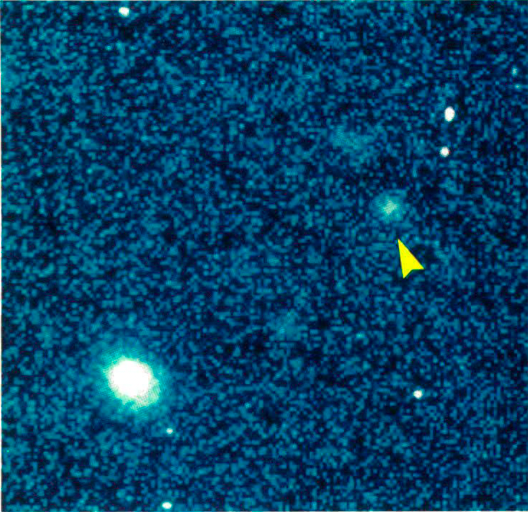
As early as 1978, articles appeared asking whether Pluto was really a planet. This oft-repeated theme picked up speed as the Kuiper Belt sprang into reality following the August 1992 discovery of 1992 QB1. In a December story that year, a quote from S. Alan Stern likened its discovery to that of Ceres, the first known asteroid. Stern’s stories have continued to update readers on outer solar system topics throughout the years.
A July 1999 feature by Senior Editor Rex Graham asked once again “Is Pluto a Planet?” Astronomers argued that with hundreds of Kuiper Belt objects (KBOs) now known, Pluto should be considered one of them. Then, in November 2005, astronomer Mike Brown said, “Start rewriting the textbooks.” The KBO 2003 UB313, discovered in July 2003, was likely bigger than Pluto. Should the solar system now have 10 planets?
“Pluto gets the boot!” appeared in December 2006, following the International Astronomical Union’s decision to reclassify it as a dwarf planet — a category it now shared with Ceres and 2003 UB313 (renamed Eris). There are currently five recognized dwarf planets; we’ve since added Makemake and Haumea.
Nonetheless, Pluto remained a last frontier of sorts. A May 2002 story mentioned the tentatively confirmed New Horizons mission, set to launch in 2006 and reach the distant world in 2015 or 2016. Astronomy eagerly followed New Horizons leading up to the July 2015 flyby. That was a huge year for Pluto in our pages, culminating with a triumphant November headline: “The Pluto system explored!” No longer envisioned as a cold, quiet, dead world, Pluto was a complex and active “icy wonderland,” Stern wrote. The data delivered surprises at every turn, including a possible slushy ocean beneath the surface.
New Horizons has since returned up-close views of Arrokoth (formerly named Ultima Thule), a smaller KBO beyond Pluto and the farthest world ever imaged. Astronomy has covered how its strange shape and intriguing past have shed light on a cold, dark region of our solar system that, when this publication began, was entirely theoretical.
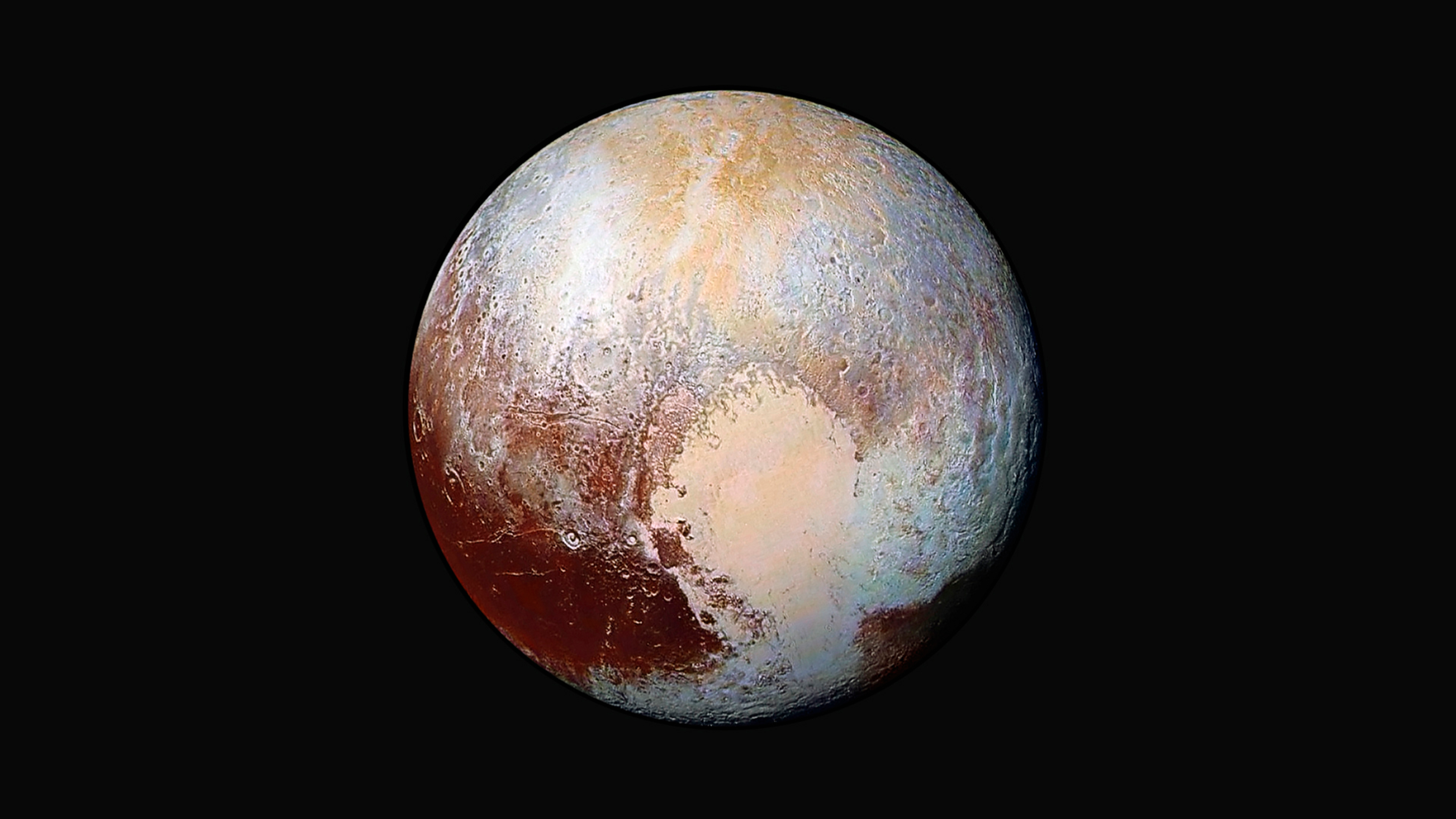
Planet X
Astronomy’s inaugural issue included an article titled “In Search of Planet X.” Astronomers thought an undiscovered planet 300 times more massive than Earth might travel on a highly inclined orbit twice as far from the Sun as Neptune. The influence of such a planet could explain observed irregularities in the movements of Halley’s Comet.
Planet X faded into history, but a similar idea appeared in June 2016, when astronomers led by Mike Brown discovered a strange clustering in the orbits of several KBOs, suggesting they’d been nudged by an unknown planet. The 10-Earth-mass “Planet Nine” must lie some 600 AU from the Sun, with an orbit inclined 30° to the ecliptic. Several teams are now searching for a glimpse of the faraway, dim world.
Quasars and supermassive black holes
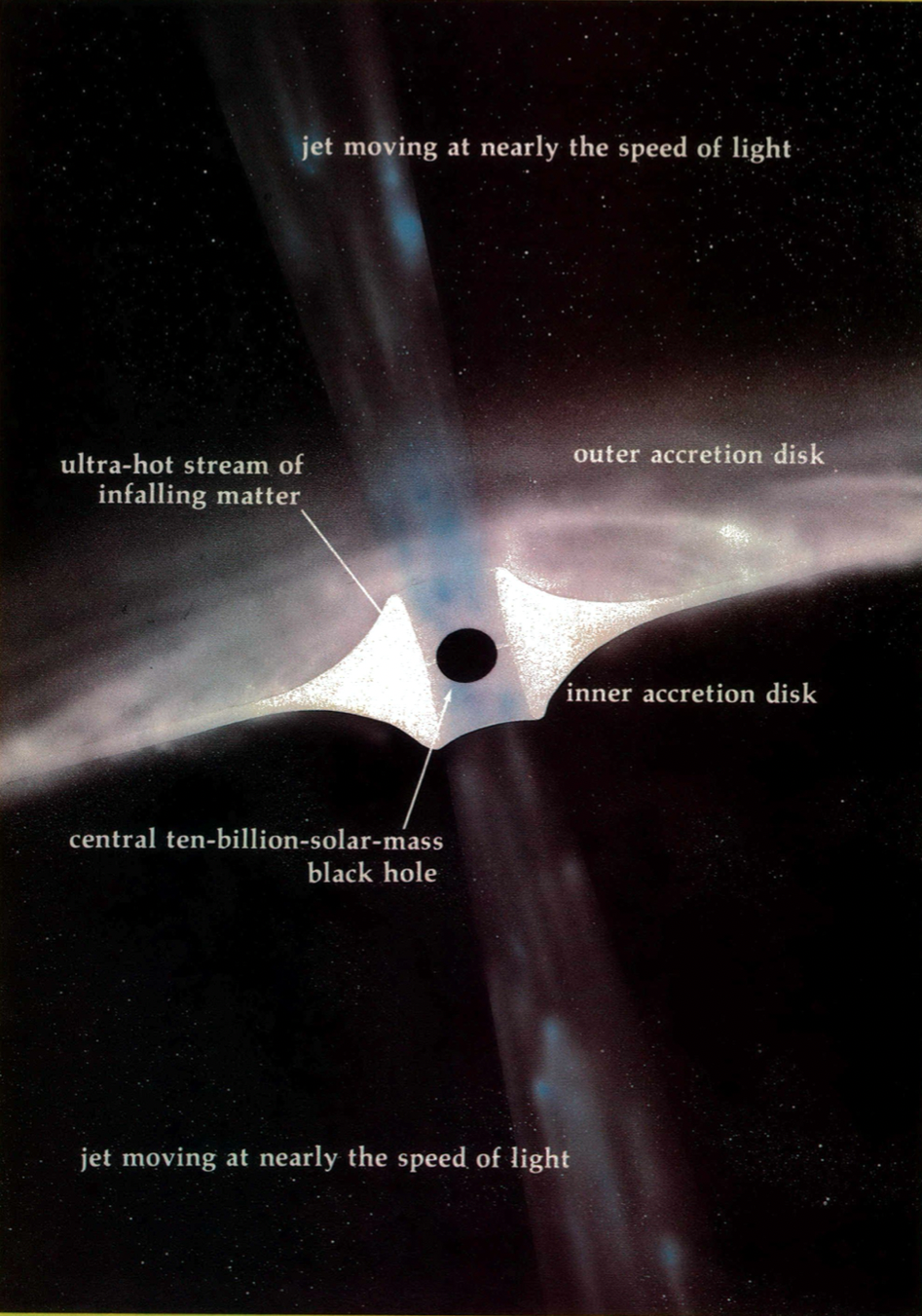
In five decades, we’ve learned much about the galaxies that populate our universe. But solving one particular mystery has had far-reaching implications for our understanding of how those galaxies evolve.
In Astronomy’s fourth year, “Quasars: Oddities of Space” discussed the blazing beacons discovered just 15 years before. Each of these objects was as bright as some 1,000 Milky Way galaxies, yet emitted its light from a region only about twice the diameter of Pluto’s orbit — and astronomers had no idea what powered them. The possibilities ranged from exploding primordial black holes to objects launched from galactic cores to numerous supernovae going off in a chain reaction. Or perhaps, as astronomer Donald Lynden-Bell suggested, they might be related to massive black holes, one of which could even lurk in the center of the Milky Way.
Over time, quasars began to take shape. A December 1979 feature reported that researchers were exploring the connection between active quasars in distant, young galaxies and quiescent, modern-day galaxies, wondering whether one might transform into the other. (We now know they do.) The same story noted the Milky Way’s center showed “uncanny resemblances to a scaled-down quasar.”
Throughout the 1980s and early ’90s, better observations clinched the case for quasars as accreting supermassive black holes. Their immense light came from the massive disk formed as material swirled inward. Friction between particles in the disk generated vast amounts of radiation, while jets shot out along the poles, sometimes reaching far beyond the host galaxy. By the mid-90s, every mention of “quasar” within our pages stated firmly that they were powered by supermassive black holes. Astronomers had also determined that the numerous classes of galaxies with bright centers — just not quasar bright — also contained feeding supermassive black holes. Their differences could be explained by which way the black hole was oriented relative to Earth and how much obscuring dust was (or wasn’t) present.
In 1998, a feature proclaimed that “supermassive black holes probably lurk in the centers of all the big galaxies,” including our own. (Estimates then pinned the Milky Way’s black hole at 2 million solar masses — a tad light.) But something else was afoot. A February 2001 story explained that astronomers had previously believed these behemoths and their home galaxies were largely unaware of each other. New evidence was throwing that idea out the window by showing supermassive black holes and their galaxies had properties that were tightly linked. Researchers were starting to suspect that supermassive black holes were a vital part of galactic evolution. By July 2013, astronomers had discovered that feedback from supermassive black holes dramatically affects the growth of their host galaxy. It became clear the supermassive black holes and their hosts evolve together, and this relationship has shaped the galaxies in our universe.
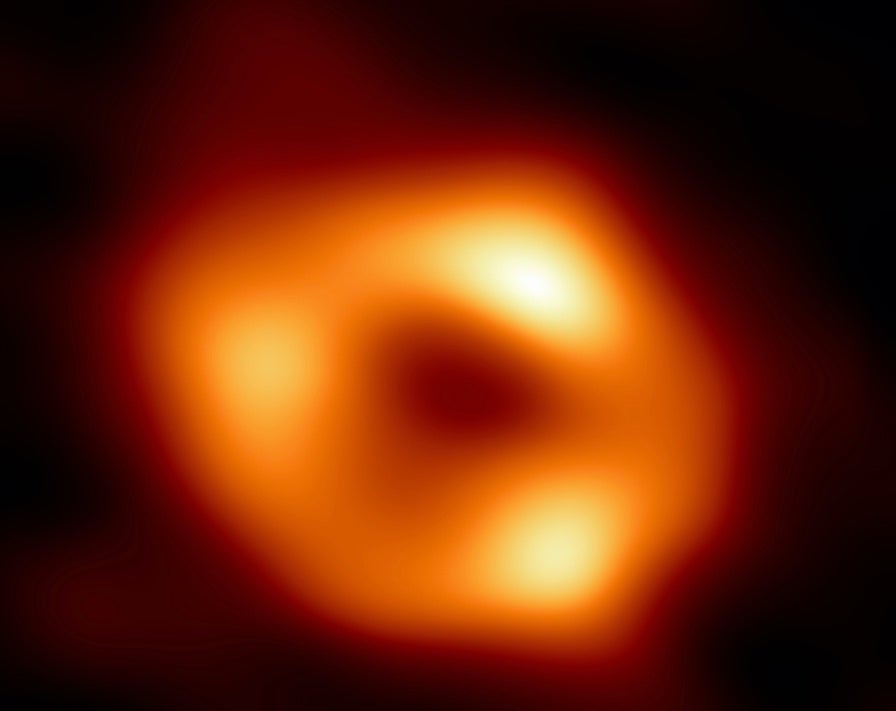
But how did such massive black holes get there in the first place? This is an answer we don’t yet have. Stories in March 2004 and in March 2021 focused on the quest for the answer; the latter is our most recent on the matter. It notes that we have now seen supermassive black holes just 700 million years after the Big Bang. There is no way to build such early black holes from mergers of smaller black holes. Perhaps these start out with most of their mass already in place. Only more work will tell.
The nature of the universe
Astronomy has witnessed numerous groundbreaking and paradigm-shifting discoveries in our understanding of the cosmos.
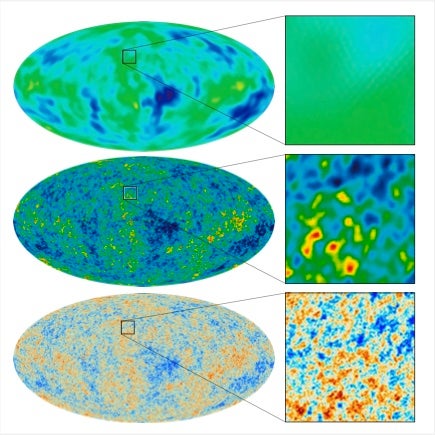
One such shift began in June 1990, when Astronomy revealed initial results from the Cosmic Background Explorer (COBE), recently launched to observe the cosmic microwave background (CMB) radiation left by the Big Bang. COBE’s picture of a perfectly uniform Big Bang was a stunning achievement, but left astronomers wondering how galaxies, stars, and planets could have formed from such smoothness.
Two years later, another story appeared. Careful analysis of COBE’s map showed tiny temperature variations — on the order of 0.001 percent — across the CMB. These variations, cosmologists said, were the seeds of all structure in the universe. Wanting to be absolutely sure, the researchers had delayed the announcement until they had checked and re-checked their findings. COBE’s results now supported a universe with inflation and “cold” dark matter made of particles, wiping out several alternative scenarios overnight.
Before astronomers could get a closer look at the CMB, November 1998’s “Exploding Stars Tell All” revealed that observations of distant type Ia supernovae made by two competing groups both indicated our universe was fated to expand forever. Even more stunning, the expansion rate had recently sped up. “It’s a weird idea that unsettles just about everyone, for it may mean that some mysterious pressure pervades all of space — repelling space from itself with increasing magnitude as the volume of the universe grows,” the story read. That mysterious pressure has been named dark energy, and along with dark matter has garnered frequent features in this publication.
The Wilkinson Microwave Anisotropy Probe (WMAP) launched in 2001 to view the CMB with better resolution. It saw an “absurd universe,” said a November 2003 story, in which normal matter made up a miniscule fraction of a percentage of the total contents of the cosmos. Instead, dark matter and dark energy dominated.
In October 2013, Astronomy featured the Planck satellite’s first cosmology results. Planck gave the most detailed look at the CMB to date, updating our estimates of the universe’s contents to 68.3 percent dark energy, 26.8 percent dark matter, and 4.9 percent normal matter. It confirmed WMAP’s finding of the universe’s age: 13.8 billion years. These values and others derived from the three satellites’ observations have honed our understanding of the Big Bang and how the universe has evolved to its present form.
But what about its future? All we know is that dark energy holds the key to how the cosmos will end. As of yet, astronomers cannot measure the cosmological parameter determining the universe’s fate with enough accuracy to differentiate between scenarios. The most up-to-date information on our ideas about the beginning and end of the universe appears in our January 2021 special issue.
Exoplanets everywhere
Our pages have documented the birth of entire branches of astronomy. One of the most compelling to emerge has been the study of extrasolar planets.
Let’s start in September 1987. “Possible Planetary Systems Discovered” announced that, by looking for “wobbles” exhibited by stars in the presence of an unseen orbiting mass, astronomers had found two potential gas giant planets: one each around Gamma (γ) Cephei and Epsilon (ε) Eridani. (These remained unconfirmed until 2003 and 2000, respectively.)
Skip ahead to December 1991, when “The First Planet Beyond the Solar System” reported a Uranus-sized world around the pulsar PSR 1829-10. Researchers had found it by noting regular discrepancies in the timing of pulses received on Earth, and were now scrambling to confirm the find and figure out how a planet had even formed around a dead star.
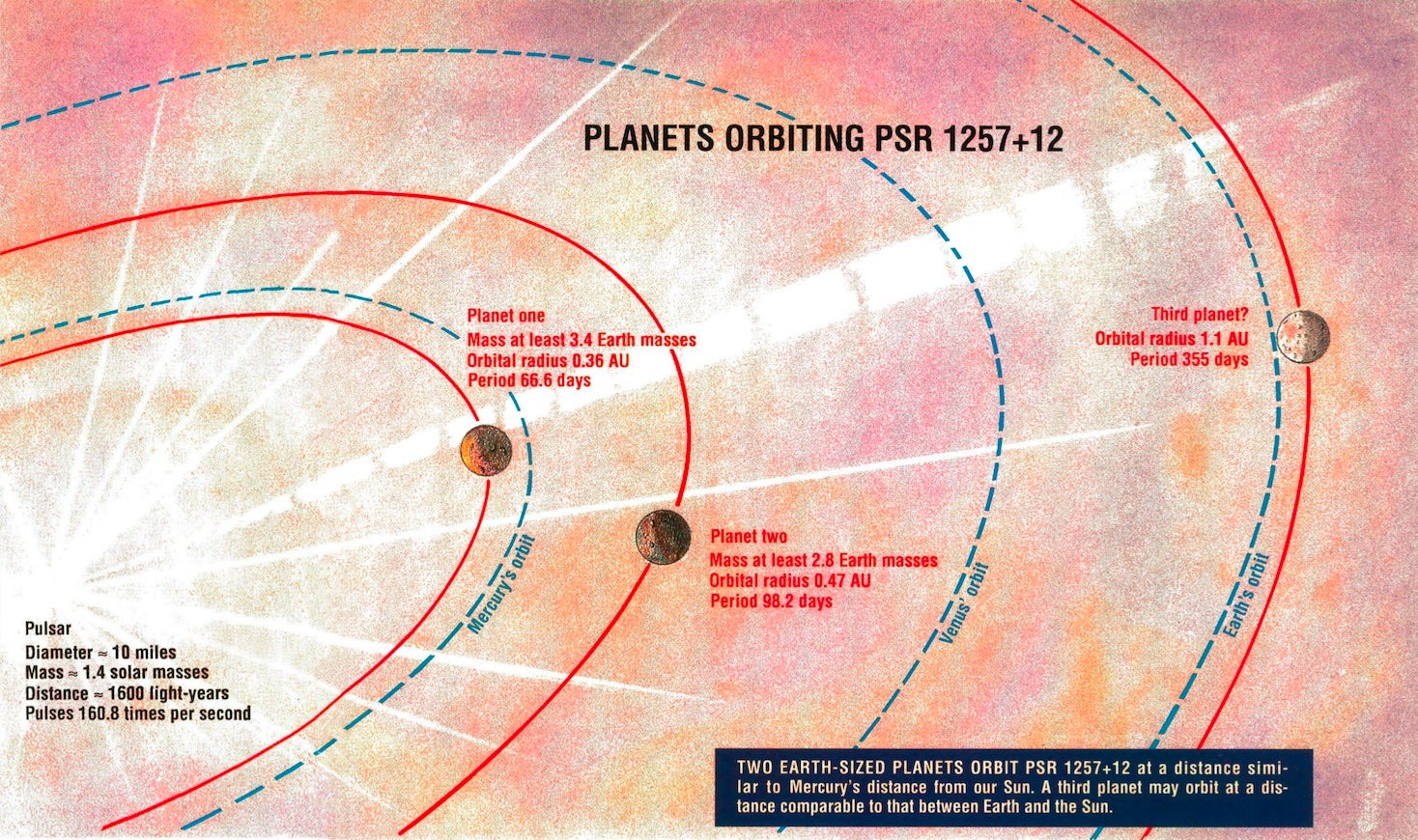
In June 1992, readers learned PSR 1829-10’s planet wasn’t real. The pulse delays were due to Earth’s orbit around the Sun. However, the story went on, astronomers had found a second pulsar, PSR 1257+12, showing similar behavior even with Earth’s motion accounted for. At least two planets circled it. This is recognized as the first extrasolar system ever discovered. A January 1996 story confirmed a third planet and hinted at a fourth (later retracted).
Then, Astronomy’s March 1996 issue reported the discovery of 51 Pegasi b orbiting a Sun-like star. This planet was slightly heavier than Jupiter but closer to its star than Mercury to the Sun. Our theories of planet formation said it couldn’t have formed there, so how had it gotten there? Perhaps it migrated inward?
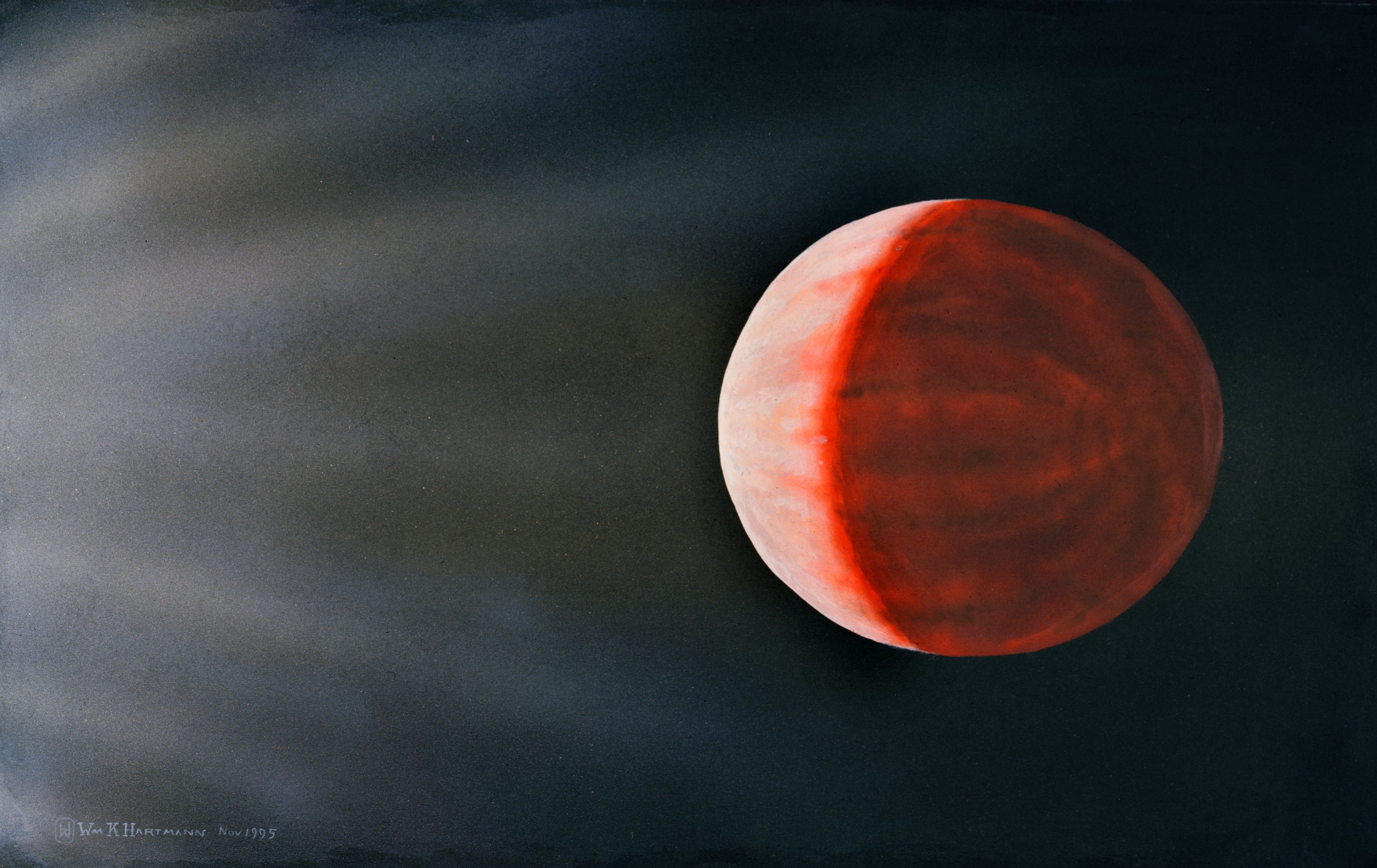
By March 2000, all 33 known extrasolar planets were massive gas giants on either close-in or highly elliptical orbits. Researchers wondered whether our solar system might be the exception rather than the rule. (Today, we know that our solar system has characteristics of many others, but in several respects remains unique. We still need more data!)
This state of affairs left astronomers itching to try a new detection technique: watching a planet transit its star. This method might find smaller, farther-out worlds that were difficult to spot via radial velocity. Dedicated to detecting transits, NASA’s Kepler launched in March 2009 and had racked up five new planets by the time a November 2010 feature on the mission appeared. When it retired in 2018, Kepler had added thousands of known planets. The Transiting Exoplanet Survey Satellite (TESS), featured in July 2017 and August 2021 stories, replaced it as NASA’s main transit-seeking space mission, albeit with different capabilities and goals than Kepler.
Transits finally allowed astronomers to search for the Holy Grail: a planet like ours. We’d find one “any day now,” according to the astronomers quoted in an August 2004 feature. But stories on the continuing search in April 2009, October 2010, and April 2011 showed that estimate had been optimistic. We finally spotted our first in 2014: Earth-sized Kepler-186 f, orbiting in at a distance where liquid water could exist.
Other Earths remain elusive. To date, just 4 percent of the 5,000-plus known planets are Earth-mass or smaller. Astronomers have uncovered, however, a type of planet absent from our solar system. A January 2005 story revealed three so-called super-Earths. Though massive (15 to 20 Earths), all were small enough to possibly be rocky worlds. Such planets have since become some of the most frequently found, featuring in stories from November 2008 and April 2017.
It’s a big solar system
This magazine has witnessed many missions uncover the planets, asteroids, and comets of our solar system in stunning detail.
The Voyagers dominated much of Astronomy’s first two decades. Photo-rich stories recount our first looks at Saturn, Uranus, and Neptune, as well as our second glimpses of Jupiter (following Pioneer 10, which was featured in February 1974). The October 2017 issue was devoted to Voyager’s 40th anniversary.
In the 2000s, Cassini and Huygens returned exquisite images from the saturnian system. (Our March 2018 issue was dedicated to them.) Jupiter has been visited multiple times, including by Galileo, Juno, and soon JUICE and Europa Clipper.
William K. Hartmann penned a 1976 article showing the first photographs from the Red Planet. “The Martians aren’t to be seen yet,” he wrote of Viking 1’s finds. “But all conditions for life seem to be there, or at least were there in the past.” An armada of missions since have confirmed that Mars was once warmer and wetter. Pioneer and then Magellan unmasked Venus’ geologic complexity from above, while the Soviet Venera missions sent back tantalizing glimpses from the ground. MESSENGER charted Mercury’s unique landscape and BepiColombo’s mission to the innermost planet is still in its early stages.
It’s not just planets that we’ve visited, either. Humankind has sent spacecraft zipping by comets and even shot one with an 800-pound (360 kilograms) impactor. We’ve tagged asteroids the same way, even returning samples to Earth for study. Dawn orbited the biggest worlds in the main belt, while Lucy is now on its way to study Jupiter’s Trojans. And we continue to develop and launch spacecraft to study the center of it all: the Sun.
Every mission — and many more — appears within the pages of Astronomy as our solar system has become a vastly richer, more dynamic, and even more life-friendly place.
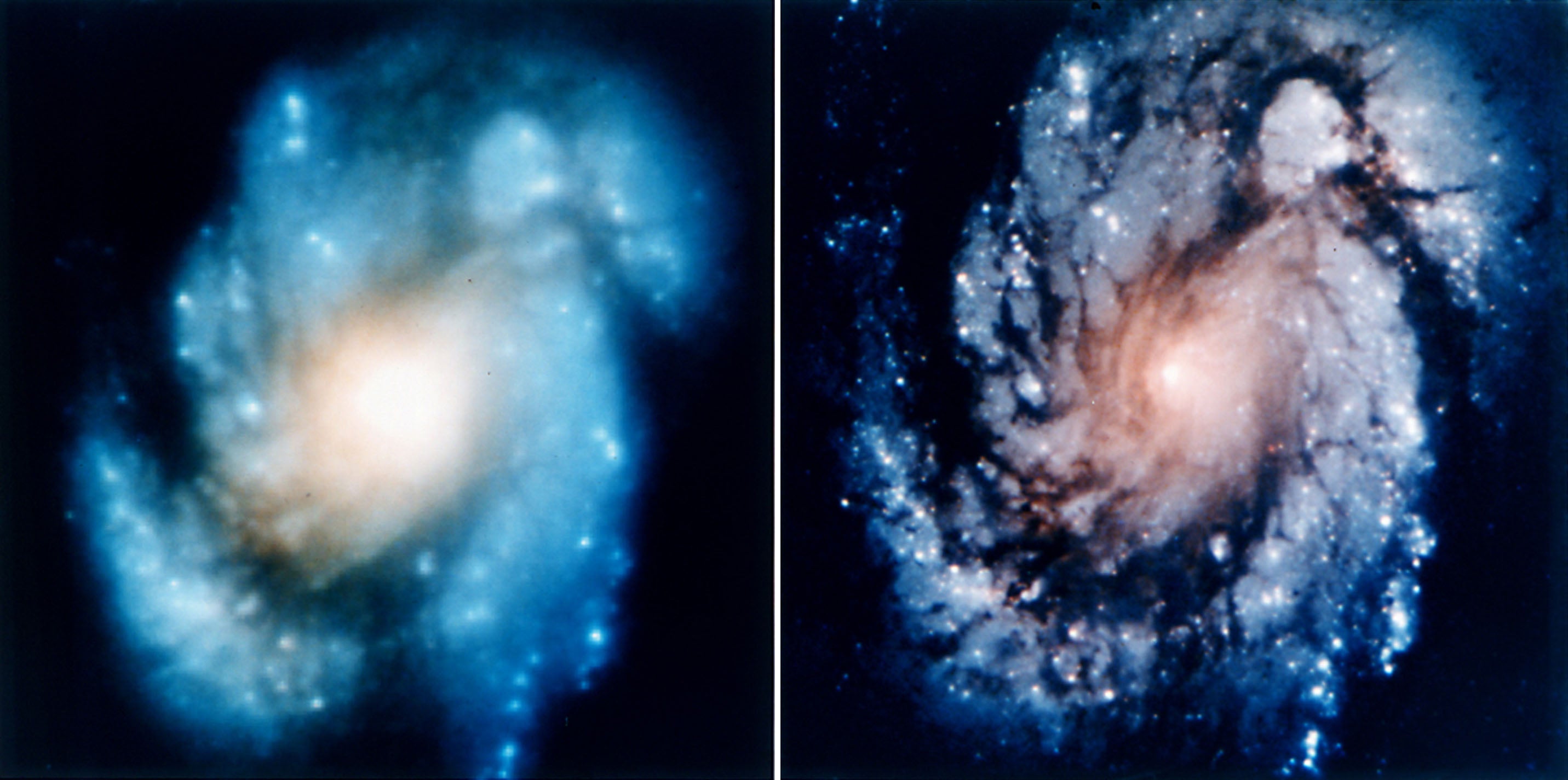
The era of space telescopes
In November 1976, a preview appeared for an orbiting observatory with a 2.4-meter mirror. Called the Space Telescope, it would study the universe from above Earth’s pesky atmosphere. Ten years later, Astronomy’s March 1986 issue looked ahead at the Hubble Space Telescope’s (HST) upcoming August launch.
But the March issue had gone to press before the tragic Challenger disaster in January grounded all shuttles for nearly three years, postponing Hubble’s launch. So it was the July 1990 issue that celebrated HST’s arrival in space. Then came a November report explaining that due to a mirror-grinding error resulting in spherical aberration, the telescope was not performing as expected. A solution would take time; meanwhile, observations continued. In some cases, blurry images could be processed to re-create the sharp eyesight the scope should have had, so Hubble photos quickly began to grace Astronomy’s pages.
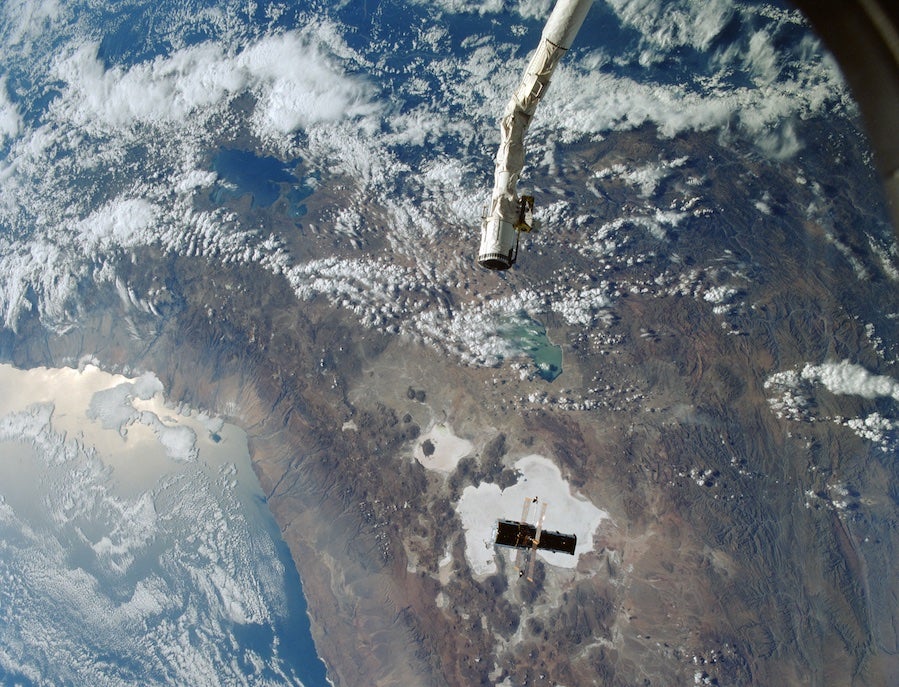
In late 1993, astronauts finally placed corrective optics in the telescope, in orbit. An April 1994 story contains a triumphant quote from space telescope project scientist Ed Weiler: “Hubble is fixed beyond our wildest expectations.” Now the Hubble images were truly breathtaking.
Follow our Hubble-based headlines and you’ll see how it transformed so many aspects of astronomy, from our solar system to the most distant galaxies we’d ever seen. Astronomy followed HST through every servicing mission and celebrated its anniversaries, including an issue devoted to the space telescope in April 2015.
You’ll also find mentions of HST’s impending demise — which has, fortunately, not yet occurred. But a May 1998 feature explained how the 8-meter Next Generation Space Telescope might take over from Hubble (which was then expected to retire in 2005). Tentatively launching in 2007, this behemoth would sit far from Earth and explore the universe’s earliest galaxies by peering into the cosmos at infrared wavelengths.
Sound familiar? This would become the 6.5-meter James Webb Space Telescope (JWST). Admittedly, a few numbers were a bit off.
By August 2005, JWST had a new projected launch date of 2011. A feature in September 2010 showed the observatory taking shape for its late 2014 or early 2015 launch. An August 2014 behind-the-scenes tour of the scope’s ongoing construction (for a launch now predicted for 2018) noted that engineers were testing and retesting every system. JWST could not be serviced once in space and no one wanted a Hubble-type mistake.
After more delays, including a worldwide pandemic, Astronomy celebrated the scope’s successful debut in the February 2023 issue, naming it the top astronomy story of 2022. This June, JWST’s early discoveries netted a full-length feature, including the deepest ever infrared image of the universe.
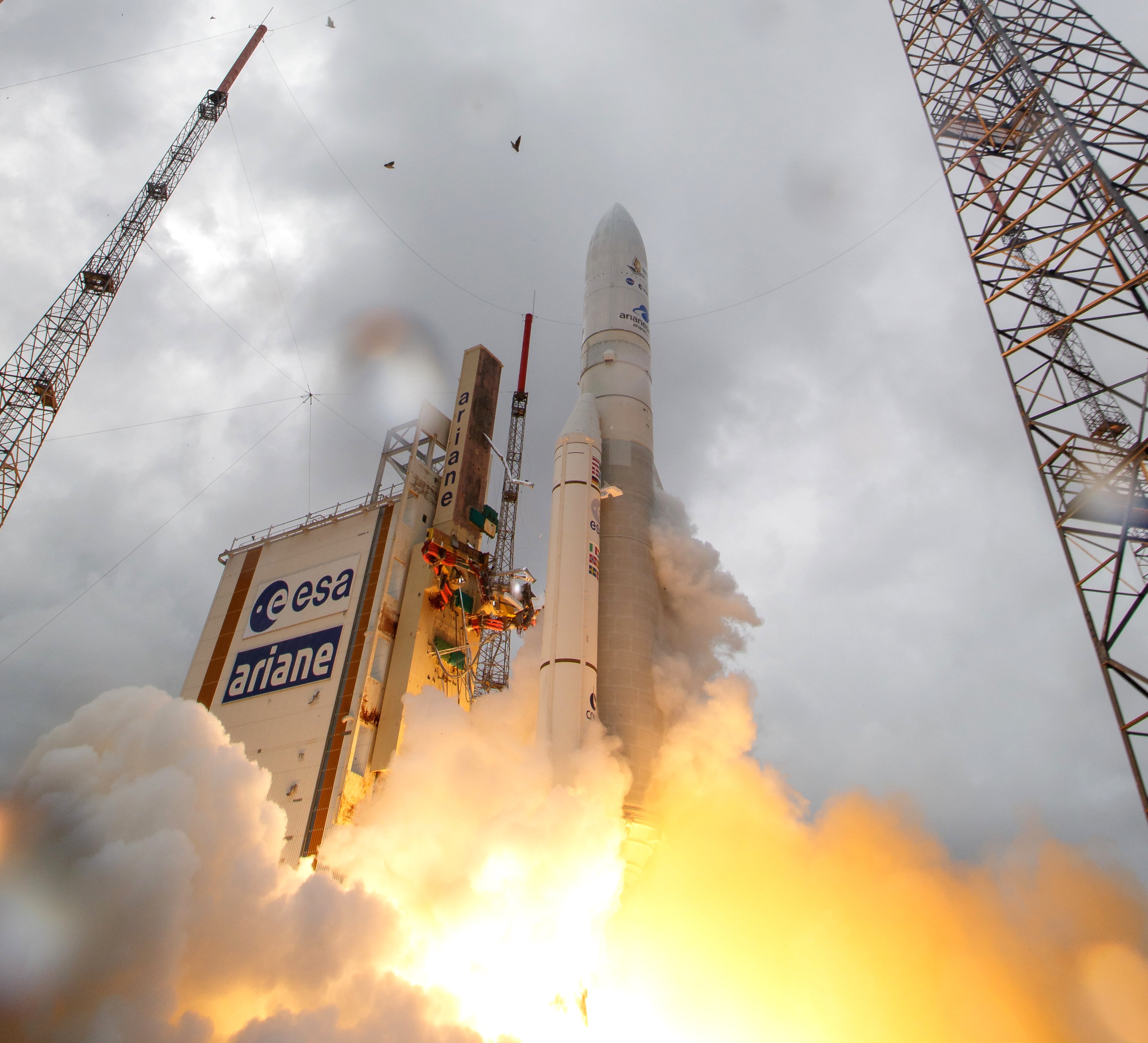
JWST, like Hubble, promises to revolutionize the field of astronomy. Here’s a taste: In June 1988, a story explored how the discovery of ever-more-distant galaxies was shaking up theories about how soon after the Big Bang such objects could exist. Deeper observations were pushing back the time by which galaxies could have formed earlier than imagined. Now, JWST has potentially discovered mature galaxies a mere 500 million to 700 million years after the Big Bang. Our picture of the early cosmos may be about to change yet again.
The pages of Astronomy have shown that for every answer uncovered, several new questions spring up that could never have been asked before. There’s still so much left to discover, and we will be here to cover it all!









